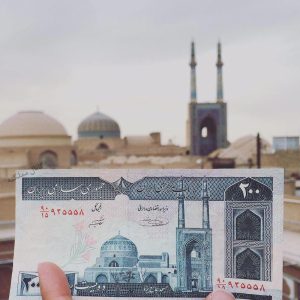This article is about the 4 main skills needed to learn Persian Language, and they’re the same fundamental skills involved in learning any language. Here’s a breakdown of the 4 main skills, along with their importance:
Free consultation about Persian language learning
+989214837929 (WhatsApp, Telegram and …)
1. Listening
What it is: The ability to understand spoken Persian. This includes recognizing sounds, words, phrases, and the overall meaning of conversations or spoken materials.
Why it’s important:
It’s the foundation of communication. You need to understand what others are saying to respond effectively.
It helps you acquire pronunciation and intonation naturally.
It builds your vocabulary and grammar comprehension.
How to improve listening skills:
Find a Persian language native partner. Travel to Iran or attend our Persian classes on TalkPersian.com
Listen to Persian podcasts, music, and audiobooks.
Watch Persian films and TV shows.
Engage in conversations with native speakers.
and be aware that you do not need to practice listening to different accents and speaking speeds.
Be sure you can not learn Persian easily without a good Persian teacher and mentor.
Who Is a Good Persian Teacher? Essential Characteristics

2. Speaking
What it is: The ability to express yourself orally in Persian. This includes pronunciation, fluency, grammar accuracy, and vocabulary usage.
Why it’s important:
-It allows you to communicate your thoughts and ideas.
-helps you build confidence in using the language.
-reinforces your understanding of grammar and vocabulary.
How to improve speaking skills:
Practice speaking with native speakers or language partners.
Record yourself speaking and listen back.
Participate in conversations, even if you make mistakes.
Imitate the pronunciation and intonation of native speakers.
Here’s a list of conversation types in Persian, with a focus on specific contexts and how cultural elements play a role:
1. Business Conversations (مکالمات تجاری – Mokālemāt-e Tejārī)
- Characteristics:
- Formality is often important, though the level can vary depending on the relationship between the parties.
- Negotiation is a key element, and understanding Persian business etiquette is crucial.
- Taarof (politeness) plays a role, but it’s balanced with the need for clear communication.
- Examples:
- Negotiating a contract
- Making a business proposal
- Discussing prices and terms
- Conducting a business meeting
- Cultural Nuances:
- Building trust and relationships is highly valued.
- Indirect communication may be used to avoid direct confrontation.
- Gift-giving may be appropriate in certain situations.
2. Social Conversations (مکالمات اجتماعی – Mokālemāt-e Ejtemā’ī)
- Characteristics:
- These are the most varied, ranging from very informal to somewhat formal.
- Taarof is very prominent in social settings.
- Expressions of politeness, respect, and hospitality are crucial.
- Examples:
- Greeting someone
- Visiting a friend or family member
- Attending a social gathering (e.g., wedding, party)
- Making small talk
- Cultural Nuances:
- Greetings are important, and there are specific ways to greet people of different ages and social statuses.
- Offering tea or refreshments is a common gesture of hospitality.
- Conversational topics may vary depending on the social setting and the relationship between the participants.

3. Family Conversations (مکالمات خانوادگی – Mokālemāt-e Khānevādegī)
- Characteristics:
- These are generally informal and relaxed.
- Language use is often influenced by family dynamics and age hierarchies.
- Expressions of affection, care, and respect are common.
- Examples:
- Talking to parents or grandparents
- Conversing with siblings
- Catching up with relatives
- Discussing family matters
- Cultural Nuances:
- Terms of address are important and vary depending on family roles.
- Respect for elders is shown through language and behavior.
- Family gatherings are important occasions for conversation and connection.
4. Formal Conversations (مکالمات رسمی – Mokālemāt-e Rasmī)
- Characteristics:
- These are characterized by the use of formal language, respectful tone, and adherence to social conventions.
- Taarof may be present, but it’s often more restrained than in social settings.
- Examples:
- Speaking with a government official
- Addressing a professor or teacher
- Interacting with someone of high social status
- Giving a formal presentation
- Cultural Nuances:
- Using the correct titles and forms of address is crucial.
- Avoiding slang or informal language is important.
- Maintaining a respectful demeanor is essential.
5. Academic Conversations (مکالمات دانشگاهی – Mokālemāt-e Dāneshgāhī)
-
Characteristics:
- These involve discussions related to academic subjects, research, and learning.
- Language use may be more technical or specialized.
- Respectful communication and intellectual exchange are important.
-
Examples:
- Discussing a research paper with a professor
- Participating in a classroom discussion
- Presenting a project
- Asking questions in a lecture
-
Cultural Nuances:
- Showing respect for teachers and professors is essential.
- Academic discourse may be influenced by Persian intellectual traditions.
3. Reading
What it is: The ability to understand written Persian. This includes recognizing the Persian script, understanding vocabulary and grammar in written form, and comprehending the meaning of texts. 4 main skills needed to learn Persian but it is important to start from listening and conversation.
Why it’s important:
-It allows you to access a wide range of information and resources.
-expands your vocabulary and grammar knowledge.
-improves your understanding of written communication.
How to improve reading skills:
Start with simple texts and gradually increase the difficulty.
Read Persian books, articles, and websites.
Use a dictionary to look up unfamiliar words.
Practice reading aloud to improve pronunciation.
The Psychology of Learning Persian Language
4. Writing
What it is: The ability to express yourself in written Persian. This includes writing the Persian script, using correct grammar and vocabulary, and organizing your thoughts effectively in written form.
Why it’s important:
-It allows you to communicate effectively in writing.
-reinforces your understanding of grammar and vocabulary.
-helps you develop clear and organized thinking.
How to improve writing skills:
Practice writing the Persian script.
Write sentences, paragraphs, and longer texts.
Get feedback on your writing from a teacher or native speaker.
Use online tools and resources to improve your writing.
I have about 9 books on Amazon about Persian literature and Rumi poems and can help in this field too.
Interconnectedness:
It’s crucial to remember that these four skills are interconnected. Improving one skill often benefits the others. For example, listening practice can improve your speaking, and reading can enhance your writing.
A well-rounded approach to learning Persian involves developing all four skills in a balanced way.
How long does it take to learn Persian?
Other important Persian language skills
You’re right to think beyond just 4 main skills needed to learn Persian! While listening, speaking, reading, and writing are fundamental, several other skills and aspects are essential for truly mastering Persian and using it effectively. Here’s a breakdown of other crucial skills:
1. Vocabulary Acquisition
- What it is: The ability to learn, remember, and use a wide range of Persian words and phrases.
- Why it’s important: Vocabulary is the building block of language. The more words you know, the better you can understand and express yourself.
- How to improve it:
- Learn words in context (from sentences, texts, and conversations).
- Use spaced repetition techniques.
- Keep a vocabulary notebook.
- Be sure you do not need to use flashcards (physical or digital) and that is a wrong way. Learning root words and prefixes/suffixes are not necessary too at the first step.
2. Grammar Understanding
-
-
- What it is: The ability to understand and apply the rules of Persian grammar.
- Why it’s important: Grammar provides the structure of the language. Understanding it allows you to form correct sentences and communicate effectively.
- How to improve it: The best way is to Pay attention to grammar in context (how native speakers use it). and analyze sentences and texts to identify grammatical structures.
- Practice grammar exercises can be useful but we have to be careful to do it in a correct way.
-
3. Pronunciation
-
-
- What it is: The ability to produce the sounds of Persian accurately.
- Why it’s important: Good pronunciation makes you easier to understand and helps you sound more natural.
- How to improve it:
- Listen carefully to native speakers.
- Imitate their pronunciation.
- Pay attention to intonation, stress, and rhythm.
- Record yourself speaking and compare it to native speakers.
- Take a private class.
-
4. Cultural Competence
-
-
- What it is: The ability to understand and interact appropriately within Persian culture.
- Why it’s important: Language and culture are intertwined. Cultural competence helps you understand the nuances of communication and avoid misunderstandings.
- How to improve it:
- Learn about Persian customs, traditions, and values.
- Watch Persian films and TV shows.
- Read Persian literature.
- Interact with native speakers and learn from their perspectives.
-

5. Language Learning Strategies
-
-
- What it is: The ability to use effective techniques to learn Persian independently.
- Why it’s important: Language learning is a long-term process. Effective strategies help you learn more efficiently and stay motivated.
- How to improve it:
- Set realistic goals.
- Find learning resources that suit your style.
- Use a variety of learning techniques.
- Monitor your progress and adjust your strategies as needed.
- Find a good teacher.
-
6. Motivation and Persistence
-
-
- What it is: The ability to stay motivated and continue learning despite challenges.
- Why it’s important: Language learning requires time and effort. Motivation and persistence are essential for achieving your goals.
- How to improve it:
- Set clear goals and remember why you want to learn Persian.
- Celebrate your progress.
- Find ways to make learning enjoyable.
- Don’t be afraid to make mistakes.
-
7. Dictation (املا – Emlā)
These additional skills, combined with the core four, will contribute significantly to your success in learning Persian. They emphasize that language learning is a holistic process involving not just linguistic skills but also cognitive, cultural, and personal attributes.
You can read the Best Articles About Learning Persian Language here:
Free consultation about Persian language learning
+989214837929 (WhatsApp, Telegram and …)
Persian Language Training Tour
Persian Language Training camp
Private Persian conversation Class Online
Persian Free Discussion Course
Learn Persian language in Tehran
Brain Effects of learning Persian
Learn Persian language in Iran best institute
Persian Learning: Arabic vs. Latin Backgrounds
Teaching and learning Persian using AI tools
